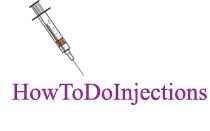All of the following is my opinion, based on my readings/understanding/interpretation of research in this area.
Standard cholesterol testing conveys very little about heart disease risk. They use the Friedewald equation to calculate the value of LDL instead of directly measuring it. The equation is as follows:
LDL = Total Cholesterol - (HDL-C + Triglycerides/5).
While statistically this equation is adequate when applied to a large sample size it maybe inaccurate on an individual basis. That is, it can vary considerably by over or underestimating your actual LDL value. Especially if you have very high or low triglyceride levels. Another problem with standard cholesterol testing is that it does not differentiate between lipoprotein particle size. Small dense LDL particles (termed pattern B) are 3-5 times more athrogenic than large ones (termed pattern A). Small particles have an increased ability to penetrate the endothelium, they are more easily oxidized and preferentially glycated (modification of protein in the presence of glucose/fructose/etc.). These are all negative characteristics, which make particle size one of the critical factors in determining Cardiovascular Disease risk (along with lipoprotein(a),C-reactive protein, homocysteine, omega-3 status, vitamin D normalization, hormonal normalization, unhealthy vegetable oil intake (so many) etc.).
Another problem is that standard cholesterol testing can pick up large LDL particles and count them as more then one. Which further artificially inflates your LDL number. But again, LDL and HDL particle size are far more important in CVD risk. The only troubling thing about your cholesterol numbers from what limited information the testing provides you is that your HDL is low. As far as LDL is concerned, it is very difficult to say if your reading is even accurate or significant (given the lack of particle size differentiation). VAP (Vertical Auto Profile) and NMR (Nuclear Magnetic Resonance) testing are two ways to determine particle size and directly measure LDL (I believe they also measure Lp(a) as well). The problem is that due to your age, the expense of this testing, and the inane, archaic perception of cholesterol in general will almost guarantee that your doctor will not run these tests if you requested them. So, you would have to order them out of pocket from an online laboratory if you are interested/concerned.
An aside: Most likely the best way (in my opinion) to determine CVD risk is to have your M.D. perform a calcium score of your heart (CT scan that measures plauqe build-up). This is of no consequence to you because you are way too young for a cardiologist to even consider it but I wanted to share for any older guys that are interested.
For most small dense LDL particles are directly correlated with carbohydrate intake, especially refined carbohydrate intake (I want to stress that this does not apply to everyone, but research shows that a majority respond this way). Furthermore, if you have two parents which express the pattern B LDL phenotype it is almost guaranteed that you will respond this way. Additionally, I would think that higher levels of adiposity and poor insulin sensitivity would also be more likely to lead to the development of pattern B (without a genetic predisposition) but I do not recall if this is implicated in the research.
Commonly, pattern size can be predicted by HDL-C and Triglyceride levels. A person with high HDL-C and very low Triglycerides will almost always have predominately pattern A LDL particles (which is good because pattern A are less athrogenic and some believe cardio-protective but that I have not studied at all). This connection is seen because high carbohydrate intake is the primary generator of TAG and assuming that this same diet is also low (relatively) in fat would likely lead to the reduction of HDL levels as well. (Low TAG and High HDL-C is a predictive measure, not a direct measure. The only way to know for sure is to be tested).
If you are interested in learning more, you can go to pubmed and read some of the review articles published by Dr. Ronald M. Krauss on this topic (ironically he is a member of the AHA which is an organization that recommends dietary advice that is high in CHO and low in Fat). Further, Dr. Michael Eades and Dr. William Davis both cardiologists with online blogs are good sources of information (though I don't necessarily agree with all of it).
I want to state again that all of the above is my opinion based on my reading of research in the area and from the writings of the above professionals. I am not an expert nor claim to be one. I encourage you to review the information and research the sources to form your own opinion on the matter. I just wanted you to be aware of this viewpoint.
Lastly, I want to apologize for not answering your question at all. I hope this information at least helps in some way.





















































































